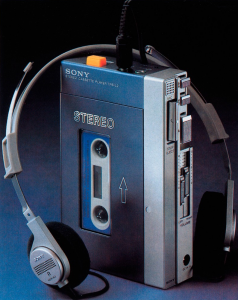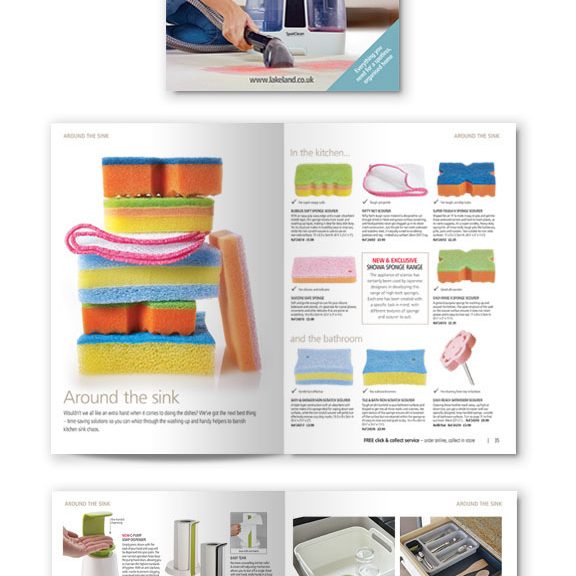How does a brand that sells kitchen gadgets by that most impersonal of channels, direct mail, and conducts no market research become a beacon for best practice when it comes to customer service?
Well it starts with a founder’s belief that you should ‘always look after the customer and the business will look after itself’, it goes on to include an inspirational customer service director and continues with a truly dedicated and committed sales force and a loyal group of brand advocates.
Alan Rayner was the founder and his initial business was selling agricultural plastics; covers for haystacks, silage sheeting, Lammacs – plastic coats to protect new-born lambs and, most famously, plastic bags for chickens. The business, originally known as Lakeland Poultry Packers, is now known simply as Lakeland.
 In 1974, when Alan retired, his three sons, Sam, Martin and Julian Rayner, took over the business.
In 1974, when Alan retired, his three sons, Sam, Martin and Julian Rayner, took over the business.
One of the first things they did was to change the direction of the business. It was a decision that laid the real foundation of the brand today.
Home freezing was the ‘in thing’ in the 1970s and the brothers had “A moment of inspiration [that] told us people who froze food also cooked it! So along came the ‘Everything for Home Cooking’ catalogue. We scaled down the agricultural side and headed in the direction of all things kitchenware”. It was to prove to be a great decision.
Although they admit that they never got on particularly well as children, the brothers seem to be a harmonious team, each with a distinct role suited to his talents. Julian Rayner, who describes himself as ‘very visual’ is the company’s marketing director and takes charge of catalogues and shop design. He describes Sam as the brains: “He understands the computer system” and so he was the natural choice for managing director. Martin is ‘a man of infinite patience’, which makes him ideal for running the buying side.
It’s a company constantly looking for and bringing new products to the market. It puts out up to 18 catalogues a year, containing 3,500 products related to homeware, cleaning, crafts and Christmas. It has about 70 stores in the UK and a thriving internet business.

Unlike some other companies though, they have a commitment to nurturing new suppliers. When they found what Julian called ‘the best fudge in the world’ in Penrith, they guaranteed to buy it in enough quantities so that the manufacturer could build bigger premises. Convinced that the Ramoska, an electric saucepan that does everything from slow-cooked stews to bread, would sell, they arranged for flexes, plugs and elements to be
sent to the Czech manufacturer and trucks to fetch the product.
Not long after the brothers took over the business, Michelle Kershaw joined them. She quickly learned everything there was to know about home freezing and kitchenware and became their resident expert and the face of Lakeland.
She went on to become their Customer Director but, as Julian readily admits, “Michelle was Lakeland. She had a huge personality, huge confidence. You couldn’t replace her. If something wasn’t right, you knew about it from Michelle. She would speak up for the customer.”
Never much of a cook, Michelle had a passion for cleaning. Every Friday, she would take home a bag full of products and test them over the weekend. If she thought something was ‘crap’, she would say so, but, if it did its job, she wanted to tell her customers.
Michelle would always be in the office at 7am brewing a litre of coffee. “She never looked less than perfect and had a room the same size as her bedroom full of glitzy clothes,” says her PA, Barbara Shepherd. “You had to be careful about admiring anything because she would give it to you – she was that generous.”
Lakeland customers were her friends. They rang her when their dogs died, they came to visit her in Windermere and sent cards. If they found a wonderful product on holiday, they couldn’t wait to get back and tell her – the soft liquorice from Australia that is selling by the ton started as a customer suggestion.
This meant that the company didn’t, and doesn’t, need to conduct formal market research as it talks and listens to its customers on the phone, constantly.
Michelle was diagnosed with lung cancer in March 2003 yet, despite her illness, she continued working long hours. She was told that she needn’t and shouldn’t come in before 8.30am, but she came in early as always.
Later that year she was given the Lifetime Achievement Award for services to the home shopping industry.
On the day before she died in 2004, Michelle was driven to the office in the afternoon. Too weak to get out of the car, she checked proofs in the car park. Next morning, her last act was to finish a customer letter.
When told of her death there was a huge, heartfelt out-pouring of grief from customers.
 Amusing though the comments are, according to Larry Page they weren’t the reason why the name was chosen. He explained, “We liked the name ‘Alphabet’ because it means a collection of letters that represent language, one of humanity’s most important innovations, and is the core of how we index with Google search!”
Amusing though the comments are, according to Larry Page they weren’t the reason why the name was chosen. He explained, “We liked the name ‘Alphabet’ because it means a collection of letters that represent language, one of humanity’s most important innovations, and is the core of how we index with Google search!”

 In 1978, Sony launched the TC-D5 a portable cassette player and, while general sales were limited due its high price, the lack of suitable lightweight headphones and its relatively large size, it did become a favourite amongst many of the senior people in the Sony company due to its high quality sound.
In 1978, Sony launched the TC-D5 a portable cassette player and, while general sales were limited due its high price, the lack of suitable lightweight headphones and its relatively large size, it did become a favourite amongst many of the senior people in the Sony company due to its high quality sound.
 Luckily for the team, three years before, engineers in another division had designed a lightweight pair of headphones. They eliminated the large, enclosed earpiece and in its place put soft foam. They weighed in at around 50 grams. They were quickly added to the new design.
Luckily for the team, three years before, engineers in another division had designed a lightweight pair of headphones. They eliminated the large, enclosed earpiece and in its place put soft foam. They weighed in at around 50 grams. They were quickly added to the new design.
 It took him nearly seven years to develop an 80-quart electrical stand mixer but when it was introduced sales grew rapidly, saving bakers’ arms up and down the country. It came to the notice of the procurement department of the US Navy and they ordered mixers for two new Tennessee-class battleships, the California and the Tennessee, as well as the U.S. Navy’s first dreadnought battleship, the South Carolina. By 1917, the stand mixer had become “regular equipment” on all U.S. Navy ships.
It took him nearly seven years to develop an 80-quart electrical stand mixer but when it was introduced sales grew rapidly, saving bakers’ arms up and down the country. It came to the notice of the procurement department of the US Navy and they ordered mixers for two new Tennessee-class battleships, the California and the Tennessee, as well as the U.S. Navy’s first dreadnought battleship, the South Carolina. By 1917, the stand mixer had become “regular equipment” on all U.S. Navy ships. Arens’ design for the 4½-quart-capacity Model K45 was sleek and modernistic, far ahead of its time. It remains virtually unchanged to this day. It was released in 1937 to huge success. All KitchenAid components are compatible with the front attachment hub of every mixer made since that day.
Arens’ design for the 4½-quart-capacity Model K45 was sleek and modernistic, far ahead of its time. It remains virtually unchanged to this day. It was released in 1937 to huge success. All KitchenAid components are compatible with the front attachment hub of every mixer made since that day.
 In 1974, when Alan retired, his three sons, Sam, Martin and Julian Rayner, took over the business.
In 1974, when Alan retired, his three sons, Sam, Martin and Julian Rayner, took over the business.
